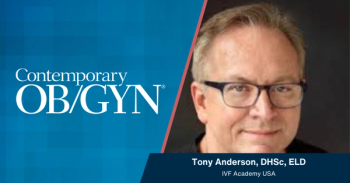
Adnexal Mass in Young Women
OBGYN.net Broadcasting PresentsFrom American Association of Gynecological LaparoscopistsLas Vegas, Nevada, November, 1999
Dr. Hugo Verhoeven: "Good afternoon, my name is Hugo Verhoeven, and I'm from Dusseldorf in Germany. I'm a member of the Editorial Advisory Board at OBGYN.net Infertility. It is a great pleasure for me to have the chance to talk this afternoon with Professor Liselotte Mettler, from the Kiel University in Germany. She is known worldwide for her expertise in endoscopic surgery and especially infertility. We would like to talk this afternoon about something that's still controversial, and that is the significance and the treatment possibilities of adnexal masses in young patients with or without infertility, older patients, and the very old. So let's us start with the young patient - what's is your experience, how do you find out, what makes you expect malignancy, and how do you treat those young patients?"
Professor Liselotte Mettler: "Good afternoon. Just this morning, at the AAGL Congress here in Las Vegas, we had a very interesting discussion, and it was a session on adnexal masses and laparoscopic treatment. I reported on this conference at this morning's session on 491 patients that we treated with adnexal masses in the last two years. The conclusion of ours, if we want to look at the young patients, was with our present possibilities of pre-diagnosis using not only ultrasound but also CT or MRI, if it's necessary, we can exclude in the majority of patients to go into an unexpected malignancy. So in the 491 cases, we did 112 laparotomies, and the rest were done by laparoscopy. We had six patients who were unexpected - four cases of borderline tumors and two of ovarian cancer, which we diagnosed only at the so-called staging laparoscopy. We then immediately continued to treat in an appropriate way. That is to say, two borderlines we treated laparoscopically, there was no need of going to the other ovary. The other four that we went into laparotomy at the same intervention, the patients were prepared because they had rather large cysts. They were prepared if it was a malignancy that we would proceed with a laparotomy and the appropriate surgery - hysterectomy, adnexectomy bilaterally and oophorectomy, unfortunately for those young patients."
Dr. Hugo Verhoeven: "Does this mean that if a young patient, let's say thirty to thirty-five years old, goes to her gynecologist and he says, "Well, young lady you've had an adnexal mass for six months now, we have to find out what the significance of this adnexal mass is." The probability of her having a malignancy would be between 0.5%-1%, is that correct?"
Professor Liselotte Mettler: "Exactly, I think we have to say independent of age. Of course, we know that patients over forty-five have a higher risk but the younger ones do have the risk of maximal 1%, if we did not previously diagnose a cancer. That is not impeding us to do laparoscopy in a large amount of patients as we did in 400 cases in the last two years but we certainly have larger cysts which we have to carefully prescreen. Now of the other reports of my colleagues from this morning, I think we were all around that same percentage. We agree that we don't feel bad if we find an unexpected malignancy because it's within the frame, it would not allow us to do on all those patients a laparotomy, which some people are still doing."
Dr. Hugo Verhoeven: "So now you're doing a laparoscopy on those young patients and you find an unexpected malignancy - what do you do?"
Professor Liselotte Mettler: "If the pathologists upon the frozen section can tell me 100% that's it's ovarian cancer, in our department we go ahead with a laparotomy and treat the patient appropriately the same day. But if it is not possible in a service of some other colleagues, they want her to be seen within one week. If the pathologist is reluctant and says he wants to wait for the final path inspection, then of course we would not proceed. We had one case three years ago with non-Hodgkin lymphoma, the patient needed totally different treatment, and luckily the pathologist also told us it's a malignancy but I cannot tell you what, please wait for the path inspection. So the majority of the patients we proceed with operations, some specific case we may want to wait."
Dr. Hugo Verhoeven: "Are you going then one week or two weeks later with a laparotomy or laparoscopy?"
Professor Liselotte Mettler: "You know very well that as Doctor Zeege in Germany has proved, if you wait longer than a week in ovarian cancer, the destiny of the patient is not very good. So we should really look to have that patient operated within one week with a laparotomy. You may ask - why not proceed with laparoscopy? There I would say, at the moment the evidence we have of good results if we stay with laparoscopy is weak. We had one case that occurred seven years ago, was operated by laparoscopy, infiltrated cancer Stage I-A, the poor patient metastasized after five years and now everybody says it's because of the laparoscopy. We know many patients metastasized after laparotomy and …"
Dr. Hugo Verhoeven: "Exactly."
Professor Liselotte Mettler: "But at the present time, internationally, we don't have enough data to say that the two methods are comparable."
Dr. Hugo Verhoeven: "Thank you."
Professor Liselotte Mettler: "My pleasure."
Newsletter
Get the latest clinical updates, case studies, and expert commentary in obstetric and gynecologic care. Sign up now to stay informed.














